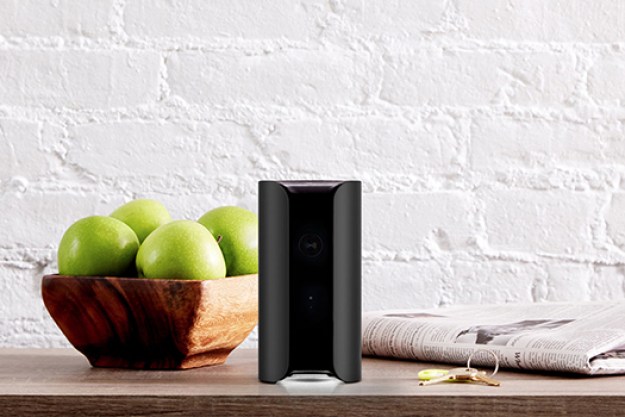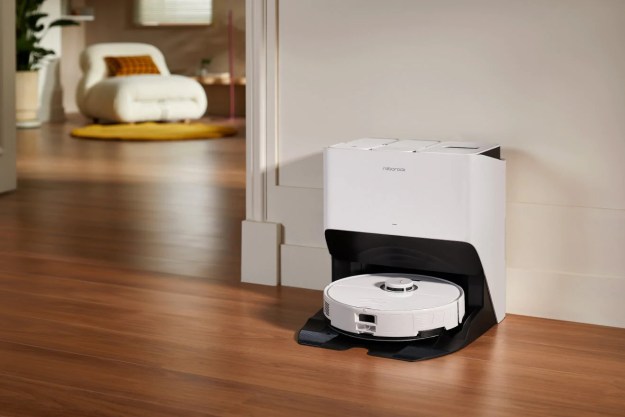
“The Canary Pro delivers clear video and audio recording along with air quality sensors, but its premium service is required to make it even half-functional.”
- Built-in air quality sensors
- Solid performance
- Offers a pseudo-financing plan
- Optional Ethernet port
- Best features locked behind Premium subscription
- Too expensive for what it offers
- Slow to start live feed
When smart home security tech initially became popular, Canary was one of the first companies to offer a reliable option with the original Canary. The tech has evolved a long way since then. The most recent iteration is the Canary Pro, an all-in-one solution that combines a security camera, siren, and motion-sensing capabilities in one.
Does it compare well with other options? In some ways, yes — but not all. While Canary is marketed as self-monitored security, it doesn’t offer the same level of protection as a system with professional monitoring.
Clarity and specs
Right out of the gate, the Canary Pro offers some impressive technical specifications, especially for a $169 security system. It features:
- 1080p HD camera with motion sensor
- 147-degree wide-angle lens
- Automatic night vision
- Two-way talk
- 90+ decibel siren
- 2.4 GHz, Ethernet, and Bluetooth compatibility
- Temperature, humidity, and air quality sensors
The camera is quite clear, especially when used in smaller spaces. The microphone clearly picks up audio (and the speakers are clear when speaking through the app.) The primary downside I found is that there is about a half-second to a second of lag between what happens in front of the camera and when you see it in the app.
The camera is quite clear, especially when used in smaller spaces.
The app itself is also somewhat slow to load. On several occasions, I waited five to 10 seconds for the image to appear. It’s not ideal for real-time monitoring, especially if you are given a motion alert when you aren’t at home.
Real-world performance
I set the Canary Pro up to act as a kitty cam. Given that I never leave home, it was the best way to test the motion detection of the camera. With that application in mind, it worked quite well. This is a screenshot of it in action, albeit with a moving target.

I tested the Canary Pro without its premium subscription, but even though it lacked many features, it still worked well. The core feature set is what counts: Reliable motion detection, two-way audio, and a siren (although I never used it except to test.) That said, I wouldn’t lean on it as my main security device without its premium subscription.
One of the standout features of the Canary Pro is its air quality detection. While this isn’t that unusual anymore — companies like Blink have begun offering this to some extent, too — the Canary Pro does more than just give you the temperature. It also measures humidity and looks for pollutants in the air.
The sensor isn’t as powerful as one you might find in a high-quality air purifier, but it can detect pollutants such as isobutane, hydrogen, methane, ethanol, carbon monoxide, cigarette smoke, and cooking odors. It then displays a graph of the changes in air quality over time, as well as a real-time reading of the current air quality, temperature, and humidity. For example, while burning a candle nearby, the air quality remained relatively stable, but pollutants spiked temporarily after the candle was blown out.
One of the standout features of the Canary Pro is its air quality detection.
I found differences in readings between the Canary Pro and my dedicated air quality sensor, but as an additional feature in a security camera, it’s sufficiently accurate.
Like most monitoring systems, there are three modes to choose from: Away, Home, and Night. By default, Away Mode enables recording and lets you watch live, while Home Mode disables recordings while retaining live viewing. Night Mode is set to alert you only when the system detects a person.
You can edit what each mode does, as well as set up schedules for when a mode should activate. The Canary Pro also utilizes a form of geofencing to automatically enable or disable Home mode when your mobile device (or that of a registered family member) connects to Wi-Fi.
Is Canary Premium worth it?
Canary Premium is $10 per month or $99 per year for your first device. Every additional device after this is another $3 per month or $29 per year.

Many of Canary’s best features are locked behind this subscription. Without the service, any Canary device is severely limited in what it can do. The basic service includes 24/7 live viewing, motion notification, two-way audio, and … well, that’s basically it.
If you want to receive motion notifications with a preview image or video clip, you need Canary Premium. You also need Canary Premium for Person Detection.
It includes a lot of other features, too:
- Full-length video clips
- 30 days of video history
- Zone masking
- One-tap to call first responders
- Unlimited video downloads
- Safety button
- Incident support
- Desktop streaming
- Custom home and away modes
- Apple TV support
- Apple Watch app
- Geofencing
- Google Assistant and Alexa integration
- Two-year device warranty
Is Canary Premium worth it? If you have a Canary device, yeah, it is. Otherwise, the device just isn’t worth much at all — you’re paying for features you won’t have access to.
If you don’t have a Canary device, the Canary Premium service is a big mark against purchasing one. Restricting features behind a yearly subscription is an archaic practice and one that needs to disappear as soon as possible.
Otherwise, the device just isn’t worth much at all — you’re paying for features you won’t have access to.
It does have a single upside: many Canary products, including the Canary Pro, are free with a two-year subscription to the Premium Service. At $13 per month for the device plus the Premium service, it somewhat makes up for the cost.
Our take
The Canary Pro is a solid all-in-one security system marred by an overzealous subscription service. While the security system performs well, the restrictions make us second-guess using it in our own homes when there are better, more affordable options.
Is there a better alternative?
The Canary Pro has a lot of features, but they’re expensive to access. If you’re willing to trade a few features for affordability, then you might consider the Arlo Essential Indoor Camera. At $100, it costs less than the Canary — and though it also has a subscription plan, it’s only $3 per month. Another even more affordable option is the Ring Indoor Camera at only $60.
How long will it last?
The Canary Pro is solidly built. Barring any serious falls, I expect to see multiple years of use out of it. If something does go wrong, Canary offers a one-year warranty (or two if you have the Premium service.)
Should you buy it?
No. The self-monitored security system is too limited for anything larger than a studio apartment and too expensive to expand for larger homes, especially when there are more affordable alternatives that come so close to matching it.
Editors' Recommendations
- SimpliSafe is now using AI to prevent burglars from entering your home
- How to save Ring Doorbell video without a subscription
- Ring Battery Doorbell Pro vs. Aqara G4: Which is the better video doorbell?
- How to fix the most common Blink Mini 2 problems
- Roborock S8 MaxV Ultra vs. Roborock S8 Pro Ultra: Which is the best robot vacuum?







